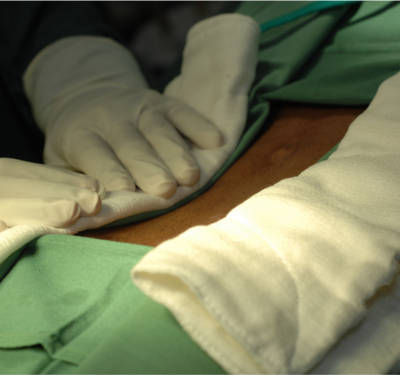Controlling a traumatic injury
Doctors are having to deal with a rising number of traumatic injuries, and need more options to control them in emergencies.
Published online 30 June 2015

Emergency rooms in many hospitals around the world often need to deal with serious injuries in badly-equipped facilities.
© Universal Images Group Limited / Alamy
Bleeding from the inferior epigastric vessels usually results in localized haemorrhage of the muscles in the abdominal wall, but is thought to be rare and is sometimes overlooked or misdiagnosed. However the condition has recently become more prevalent and, according to a unique new case report, it can sometimes cause major, life-threatening bleeding that requires an emergency laparotomy1.
Writing in the Journal of Emergency Medicine Trauma and Acute Care, Babiker Ali Mohammed of Prince Mohammed bin Abdulaziz Hospital in Riyadh, Saudi Arabia, and his colleagues described the case of a 17-year-old male admitted to the Accident and Emergency department after falling off his motorcycle at high speed1.
The patient’s right foot had been crushed in the accident, but he exhibited no signs of head, neck, or chest injuries. Abdominal examination revealed some tenderness but no bruising or other signs of internal bleeding. His trauma X-rays were satisfactory, but an abdominal and pelvic ultrasound revealed a large haemorrhage extending into his upper abdomen. The CT scan revealed the exact location together with the offending bleeding vessel.
While in the emergency department, the patient’s blood pressure dropped and his heartbeat became faster. An emergency laparotomy was performed, revealing massive bleeding below the left rectus muscle in the abdominal wall as there were no embolization facilities. The surgeons removed a haematoma containing an estimated three litres of blood, identified the damaged vessel and ligated it to stem the bleeding.
Following a below the knee amputation and transfusion of 12 units of blood, the patient‘s blood pressure stabilized and he recovered overnight in the intensive care unit.
Historically, this type of injury was thought to be predominant in elderly female patients, in whom it sometimes presents with abdominal pain and a tender abdominal mass, and is often preceded by excessive physical exertion and muscular strains such as coughing, sneezing, and minor trauma.
It can also have other causes, such as coagulation disorders, insertion of a catheter into the heart, injections into the abdominal wall, and haemorrhage after a Caesarean section. More rarely, such injuries can be triggered by yoga and laughter, and they can also develop spontaneously. In such cases, however, the clinical features can vary, and so the injuries can be misdiagnosed as appendicitis or other conditions. Errors in diagnosis have been markedly reduced by the use of CT scans.
Such injuries can be treated non-invasively, with embolization to block the damaged blood vessel. But, as this case report shows, emergency laparotomy should be performed, and can be life-saving, when there are no embolization facilities.
“Misdiagnosis can be reduced by raising awareness about the condition and increasing the use of imaging, especially CT scans,” says Mohammed.Reference
- Mohammed, B. A., Dimassi, H. & Alshehri, F. M. Traumatic inferior epigastric vessel haemorrhage. J. Emerg. Med. Trauma Acute Care 2015, 3 (2015). | article
DOI: 10.1038/qsh.2015.69

